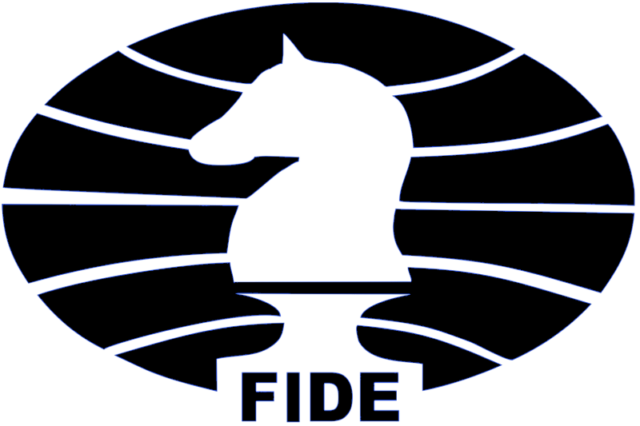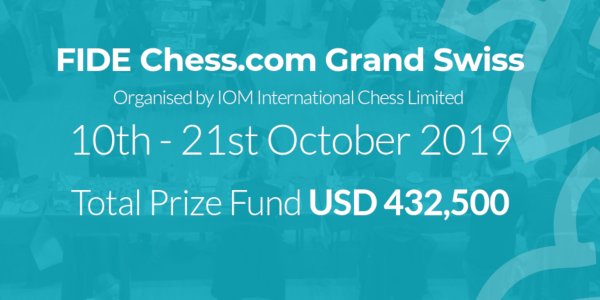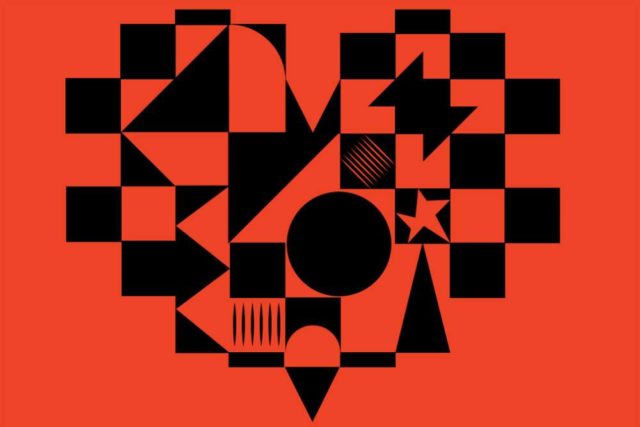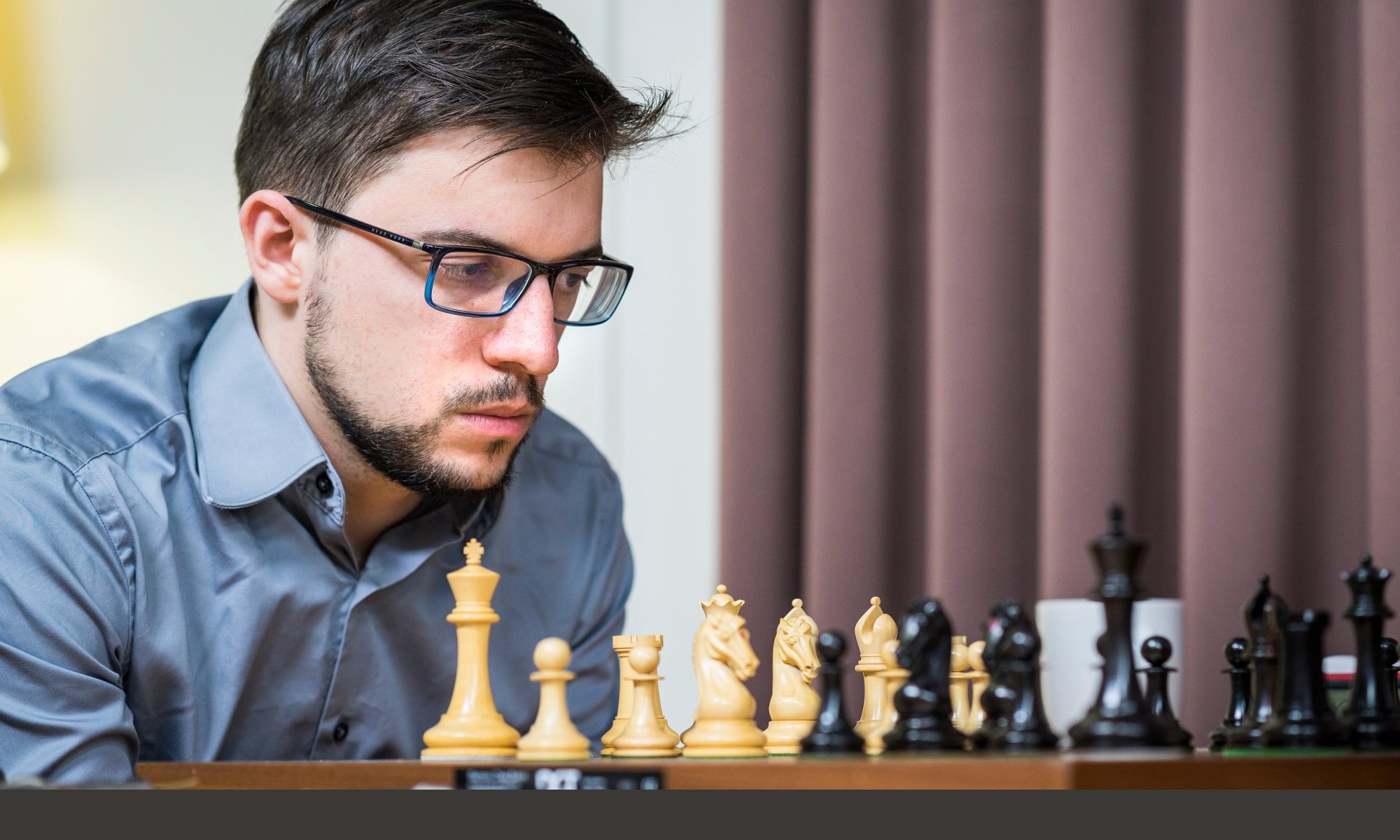As shown in his agenda, Maxime will play intensively until the end of the year. The reason is an unbalanced international events calendar.
The next World championship is scheduled November 2020, but the qualifications have already begun. In the second half of 2019, World top players will play tournaments one after another, to get a chance to qualify for the Candidates Tournament, whose winner will face Carlsen for the World title.
A double round-robin will be held March 2020, the Candidates tournament;
Fabiano Caruana, as vice World champion, is automatically qualified. So there are 7 spots remaining.
Three tournaments will allow 5 players to qualify, the 2 remaining spots being based on other criteria.
1/ World Cup: 2 qualifying places
2/ FIDE Grand Swiss: 1 qualifying place
3/ FIDE Grand Prix: 2 qualifying places
4/ Average Elo 2019 : 1 qualifying place
5/ Wild-card : 1 qualifying place
At each step of the process, if a qualifying player is already qualified, then the next player takes his spot. For example, if Player X wins the FIDE Grand Swiss while having finished 2nd in the World Cup, then the player ranked #2 in the FIDE Grand Swiss will be qualified.
Presentation of the tournaments, thanks to Wikipedia.

1/ World Cup 2019
The Chess World Cup 2019 is a 128-player single-elimination chess tournament to be held in Khanty-Mansiysk, Russia from 9 September to 4 October 2019. The finalists of the tournament will qualify for the Candidates Tournament for the World Chess Championship 2020.
The tournament is a 7-round knock-out event. The matches from round 1 to round 6 consist of two classical games with time control of 90 minutes per 40 moves plus 30 minutes for the rest of the game, with an increment of 30 seconds per move. The finals and the match for the third place consist of four classical games.
If the score is tied after the classical games, rapid and, if necessary, blitz tie breaks are played the next day. Two games are played with time control of 25 minutes per game plus 10 seconds increment. In the case of a tie, they are followed by two games with time control of 10 minutes per game plus 10 seconds increment. If the score is still tied, two blitz games follow (5 minutes plus 3 seconds increment). Finally, a sudden death game is played. The player who wins the drawing of lots may choose the colour. White has 5 minutes per game and Black has 4 minutes, with an increment of 2 seconds per move starting from move 61. White needs a win to advance to the next round.
The two top finishers who have not secured a qualification for the Candidates Tournament get a spot in that tournament.
Format
The tournament is a 7-round knock-out event. The matches from round 1 to round 6 consist of two classical games with time control of 90 minutes per 40 moves plus 30 minutes for the rest of the game, with an increment of 30 seconds per move. The finals and the match for the third place consist of four classical games.
If the score is tied after the classical games, rapid and, if necessary, blitz tie breaks are played the next day. Two games are played with time control of 25 minutes per game plus 10 seconds increment. In the case of a tie, they are followed by two games with time control of 10 minutes per game plus 10 seconds increment. If the score is still tied, two blitz games follow (5 minutes plus 3 seconds increment). Finally, a sudden death game is played. The player who wins the drawing of lots may choose the colour. White has 5 minutes per game and Black has 4 minutes, with an increment of 2 seconds per move starting from move 61. White needs a win to advance to the next round.
The two top finishers who have not secured a qualification for the Candidates Tournament get a spot in that tournament.
Participants
Players qualify for World Cup by the following paths:
- Reigning World Champion.
- Winner, runner-up and two (2) other semi-finalists of the FIDE World Cup 2017 – four (4) players.
- Reigning Women’s World Champion.
- World Junior Champions U-20 of 2017 & 2018 – two (2) players.
- Qualifiers from the Continental Championships and Zonals – ninety-two (92) players: Europe: 46 Americas: 20 Asia: 20 Africa: 6. a)Continental Championships and Zonals 2018. b)Continental Championships and Zonals 2019.
- Highest rated players from the average of the twelve (12) standard FIDE rating lists – eighteen (18) players, who have not qualified by path from I to V. For the purpose of deciding the eighteen (18) qualifiers by rating, the average ELO from the twelve (12) standard FIDE rating lists from August 2018 to July 2019 is used. In case of equality, two decimals are taken into consideration. If the numbers are still equal then the total number of rated games in all 12 standard rating periods is decisive: the player with the bigger number of games qualifies. A player who appears inactive at least once in the twelve standard FIDE rating lists from August 2018 to July 2019 is not eligible.
- Highest placed player of the ACP Tour 2018, who have not qualified by path from I to VI.
- VIII.Nominees of the FIDE President – five (5) players.
- IX.Nominees of the Organizer – four (4) players.
PrIZE MONEY
The total prize fund is US$ 1,600,000, with the first prize of US$ 110,000.
| Round | (US$) Prize received | (US$)Total |
|---|---|---|
| Round 1 | 64 × 6,000 | 384,000 |
| Round 2 | 32 × 10,000 | 320,000 |
| Round 3 | 16 × 16,000 | 256,000 |
| Round 4 | 8 × 25,000 | 200,000 |
| Round 5 | 4 × 35,000 | 140,000 |
| 4-th place | 50,000 | 50,000 |
| 3-rd place | 60,000 | 60,000 |
| Runner-up | 80,000 | 80,000 |
| Winner | 110,000 | 110,000 |
| Total (US$) | 1,600,000 |

2/ FIDE Grand Swiss 2019
The tournament will be held in Isle of Man, October 10-21. 160 players will participate, and the winner will qualify for the Candidates tournament.
A total of 105 players will be invited by FIDE based on the following criteria:
The top 100 players by average FIDE Rating of the 12 monthly lists starting from July 1, 2018 to June 1, 2019.
The Women’s World Champion as of June 1, 2019.
Junior U20 World Champion as of June 1, 2019.
The World Senior 50+ Champion as of June 1, 2019.
The World Senior 65+ Champion as of June 1, 2019.
One qualifier from the ACP Tour based on standings as of June 1, 2019.
- Twelve (12) places are allocated to the qualifiers from the respective Continental Championships held in 2019: Europe – 5 Asia – 3 Americas – 3 Africa – 1
- Three (3) players nominated by the FIDE President.
- The tournament organizers will then invite 40 more players (wild cards) as it was their wish to have a tournament of 160 players. They will focus on female players, juniors and local players, as well as online qualifiers.

3/ FIDE Grand Prix 2019
Participants
The FIDE Grand Prix 2019 is a series of four chess tournaments that forms part of the qualification cycle for the World Chess Championship 2020. The top two finishers will qualify to the 2020 Candidates Tournament.
Players
The Grand Prix consists of 21 players. 20 qualify by rating, and 1 player was nominated by World Chess. The rating used was the average of the 12 monthly lists from February 2018 to January 2019.
Since that leaves one place in the final tournament, one player is nominated by Tel Aviv organizer to play in the Tel Aviv tournament only, and their result will be not counted to the Grand Prix.
The list of rating qualifiers was released on 25 January 2019. Five players qualified but declined their invitations: Magnus Carlsen, Fabiano Caruana, Ding Liren, Vladimir Kramnik and Viswanathan Anand. Carlsen and Caruana had no need to play in the tournament (Carlsen as World Champion, and Caruana had already qualified for the Candidates Tournament); while Kramnik had recently announced his retirement. This resulted in the first five reserves being invited.
The final list of Grand Prix players, including Daniil Dubov as the organizer’s nominee, and their schedule, was released on 19 February.
| Invitee | Country | Qualifying method |
|---|---|---|
| Shakhriyar Mamedyarov | Azerbaijan | rating (3) |
| Maxime Vachier-Lagrave | France | rating (6) |
| Anish Giri | Netherlands | rating (7) |
| Wesley So | United States | rating (8) |
| Levon Aronian | Armenia | rating (9) |
| Alexander Grischuk | Russia | rating (11) |
| Hikaru Nakamura | United States | rating (12) |
| Sergey Karjakin | Russia | rating (13) |
| Yu Yangyi | China | rating (14) |
| Ian Nepomniachtchi | Russia | rating (15) |
| Peter Svidler | Russia | rating (16) |
| Teimour Radjabov | Azerbaijan | rating (17) |
| Veselin Topalov | Bulgaria | rating (18) |
| Dmitry Jakovenko | Russia | rating (19) |
| David Navara | Czech Republic | rating (20) |
| Radoslaw Wojtaszek | Poland | rating (1st reserve) |
| Wei Yi | China | rating (2nd reserve) |
| Jan-Krzysztof Duda | Poland | rating (3rd reserve) |
| Pentala Harikrishna | India | rating (4th reserve) |
| Nikita Vitiugov | Russia | rating (5th reserve) |
| Daniil Dubov | Russia | Organizer nominee |
Format
There are four tournaments in the cycle; each consisting of 16 players. There are 21 contestants, who each play in 3 of the 4 tournaments.
The tournaments are knock-out tournaments, in the same style as the Chess World Cup. At each round of the tournament, players play a best-of-2 game knock-out match. The regular games are:
- best-of-2 games at a time limit of 90 minutes, + 30 minutes added after move 40, + 30 second per move increment from move 1.
If the match is tied 1-1, up to four tie breaks are played, at progressively faster time limits, with the match ending when a player wins any tie break. The tie breaks are, in order:
- best-of-2 games at a time limit of 25 minutes, + 10 second per move increment from move 1.
- best-of-2 games at a time limit of 10 minutes, + 10 second per move increment from move 1.
- best-of-2 games at a time limit of 5 minutes, + 3 second per move increment from move 1.
- a single armageddon chess game: white receives 5 minutes + 2 second per move increment from move 61; black receives 4 minutes + 2 second per move increment from move 61; black wins the match in the case of a draw.
Players receive Grand Prix points as follows:
| Round | Grand Prix points |
|---|---|
| Winner | 8 |
| Runner-Up | 5 |
| Semi-final loser | 3 |
| Round 2 loser | 1 |
| Round 1 loser | 0 |
| Each match won without a tie-break | +1 |
The two players with most Grand Prix points qualify for the 2020 Candidates tournament. In the event of a tie on Grand Prix points, the following tie breaks are applied, in order:
- most tournament wins;
- most tournament second places;
- most points won in standard time control games;
- head-to-head score, in terms of matches, between players tied;
- drawing of lots.
The tournament dates and locations are as follows:
- Moscow, Russia, 16–30 May 2019
- Jurmala/Riga, Latvia, 11–25 July 2019
- Hamburg, Germany, 4–18 November 2019
- Tel Aviv, Israel, 10–24 December 2019
Prize money
The prize money is €130,000 per single Grand Prix with an additional €280,000 for the overall Grand Prix standings for a total prize fund of €800,000.
For each individual tournament, the prize money is: €24,000 for the winner, €14,000 for the runner-up, €10,000 for the semi-final losers, €8,000 for the Round 2 losers, and €5,000 for the Round 1 losers.
For the final standings, the prize money is €50,000 for 1st, €45,000 for 2nd, and so on down in steps of €5,000 to €10,000 for 9th, and also €10,000 for 10th. Prize money for players on equal Grand Prix points is shared.

In January 2020, the last two spots for the Candidates will be given as follows:
4/ Average Elo rating
One spot in the Candidates Tournament is to be taken by the player with the highest average FIDE rating. For the purpose of deciding the qualifier, the average ELO rating from the twelve (12) FIDE Standard Rating Lists from February 2019 to January 2020 is used.
It will be hard to overtake Ding Liren, who’s currently leading the race with a wide margin. If the chinese player qualifies in another way, the fight will be hard between Giri and Mamedyarov. Mvl is next on the list, but he’s far away.
The Organizer of the FIDE Candidates Tournament 2020 has the right to nominate a player. Unlike the previous Candidates tournament, he will have to pick a player in a limited pool. Here are the rules :
– The player must have played at least 2 of the 3 qualifying tournaments. He also must be :
- either the best non-qualifying player of the FIDE World Cup, Fide Grand Swiss or FIDE Grand Prix
- or a player from the top 10 players by average FIDE rating.

